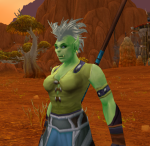
Jokaydia monitors children ages 4-16 in constructing spaces in Minecraft. Students use video capture and editing software to make machinima. This student built space is a historical complex.
Ask a 10-year old how they know something or learned to do something and the answer may very well include “I saw it on YouTube”. With “Digital Literacy” and Coding being recognized as skills required for future success, and employment, it seems to make sense to update academic fairs to include digital elements beyond word processing. Perhaps instead of cardboard box dioramas, sugar-cube structures and tri-fold cardboard displays we could accomplish learning objectives with machinima, digital storytelling, websites, blogs, wikis and 3-D digital modeling. This is not to diminish the use of art supplies and creativity in the visual arts. Manual dexterity and artistic expression is important, but not the primary objective of Academic Fairs.

A Traditional Academic Fair Display begins in a school with winners being displayed regionally at a local Mall or Library.
Many of us have participated in promoting, supporting , guiding or completing the work for a child participating in an academic fair. I still remember a 2:00 AM crying moment and my older brother helping me (actually he did the whole thing with exception of the windows that just were perfectly illustrated with a tap of a magic marker) to make a model of the Pentagon. To this day I know very little about the Pentagon (the empire state building would have been so much easier) but I did learn some geometry, some research skills, collaboration (sort of), time management (after the fact), and I am still a night owl. It is the process that is important. The artistic work and use of materials, though an obvious focus to fair attendees, is secondary to what the student learns. Whatever I learned through my 6th grade Social Studies Project experience, was not reflected in my brother’s ability to construct models.
Machinima made by capturing video in an immersive environment or video game and edited with sound, music and dialog to depict a historical event, literary work, or scientific concept requires research, planning, and time management skills. Building a model in a 3-D environment like Minecraft requires planning, sometimes research, digital literacy, creativity and time management. Developing a website requires similar skills. Each of these digital possibilities requires the same basic skills that traditional academic fair projects require, in addition to digital literacy. Collaboration is not typically included as an objective in academic fairs, though parents and older siblings are sometimes involved. Including collaboration as an objective would align to Common Core Standards and 21st Century Skills and the collaboration would likely include peers. Parent involvement may actually be flipped in this model, with the student guiding the parent to understand the digital environment, particularly as it applies to immersive or game environments.
Time and space become less of a barrier as a local fair can potentially expand to a global fair with public views and even community “up votes” on deserving entries. Collaboration with peers from different geographic locations could potentially help prepare today’s students to collaborate globally as adults. It seems logical to take advantage of the use of digital spaces by our youth to include academic endeavors. The Information Revolution has provided almost anyone the ability to share what they know and are are able to do. Some of the YouTube videos being watched by 10-year olds have been created by other 10-year olds, sharing what they know and are able to do. An academic fair project posted on the web has potential to generate interest and extend learning beyond what an individual child learns from a 20th Century academic fair project. As educators we can support, guide, monitor and inform this kind of activity by our students.











